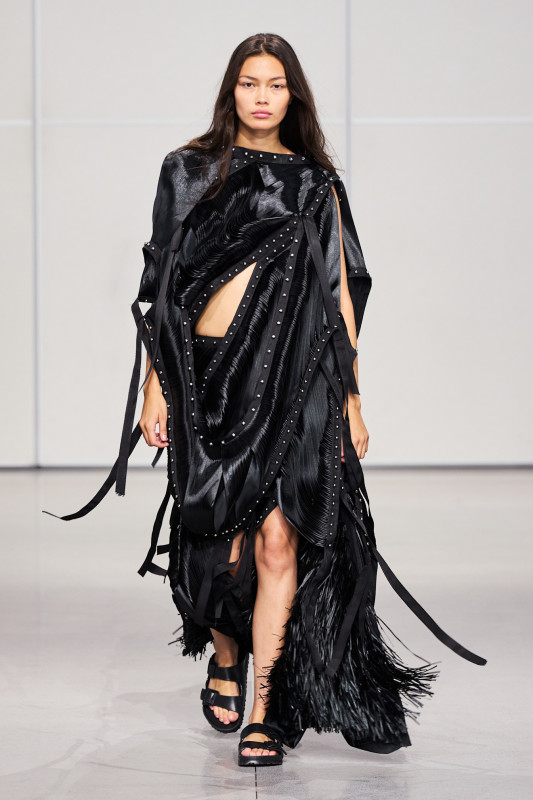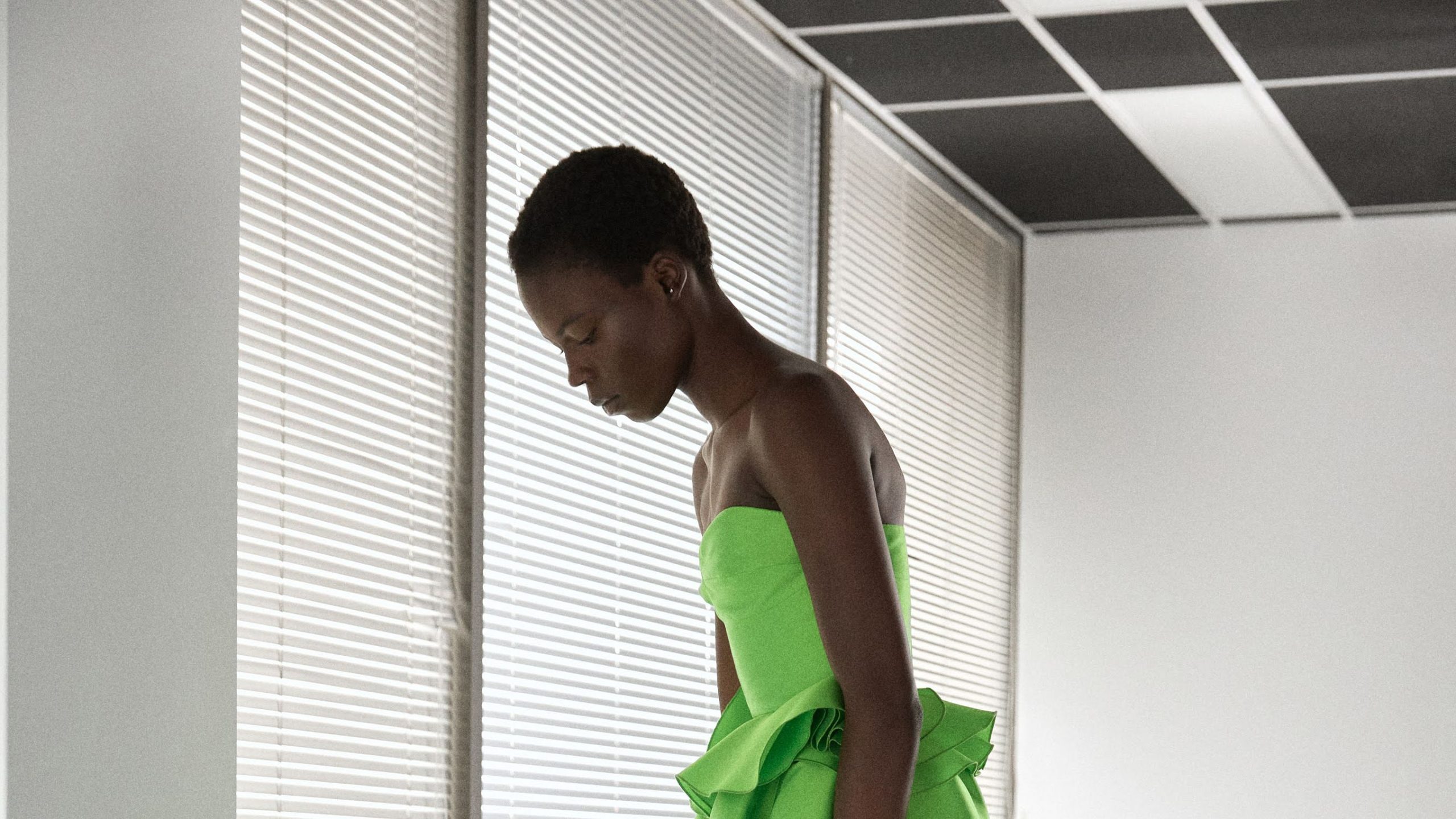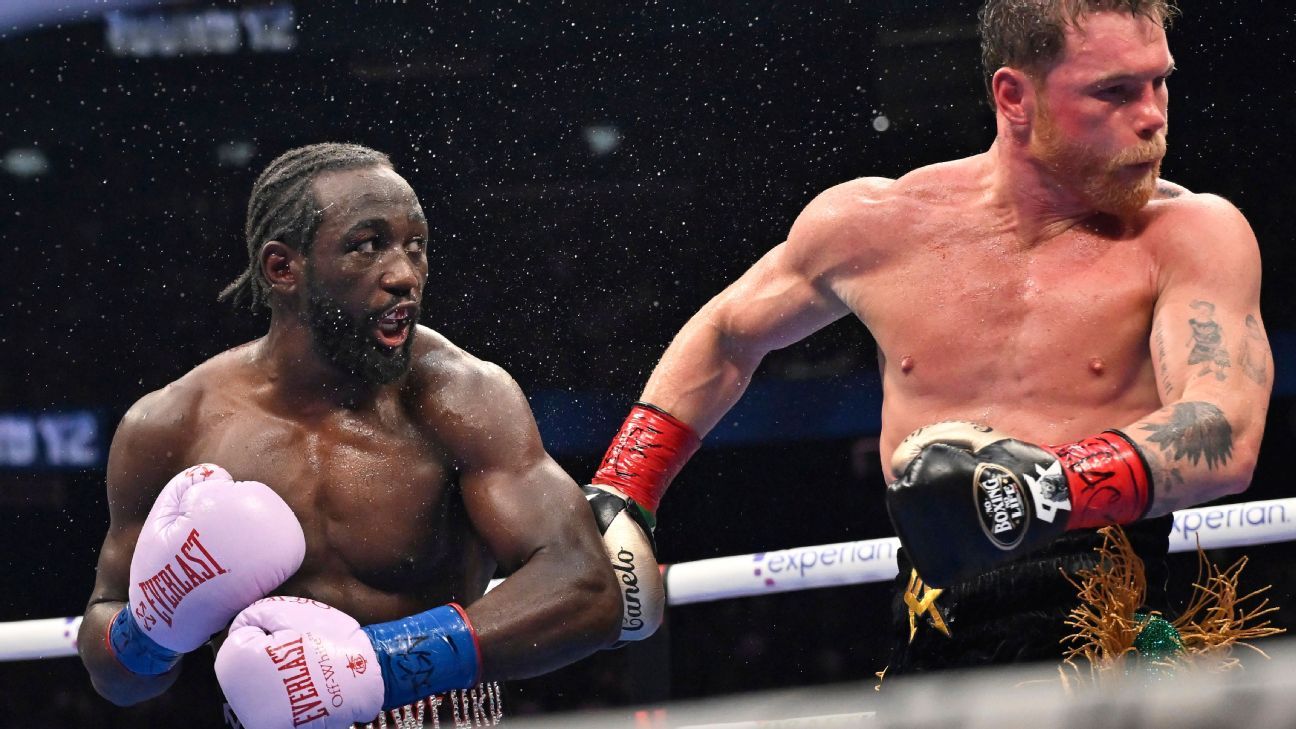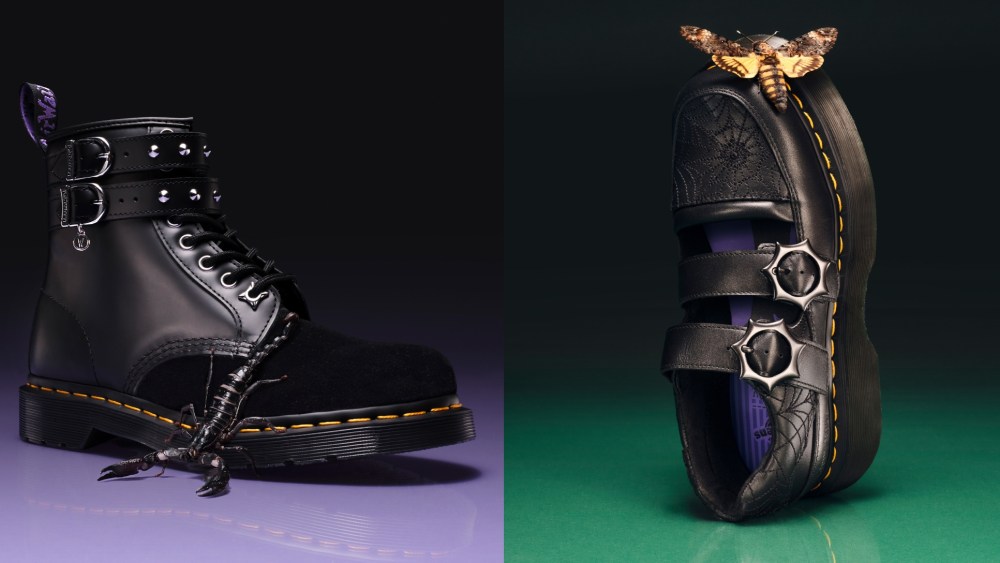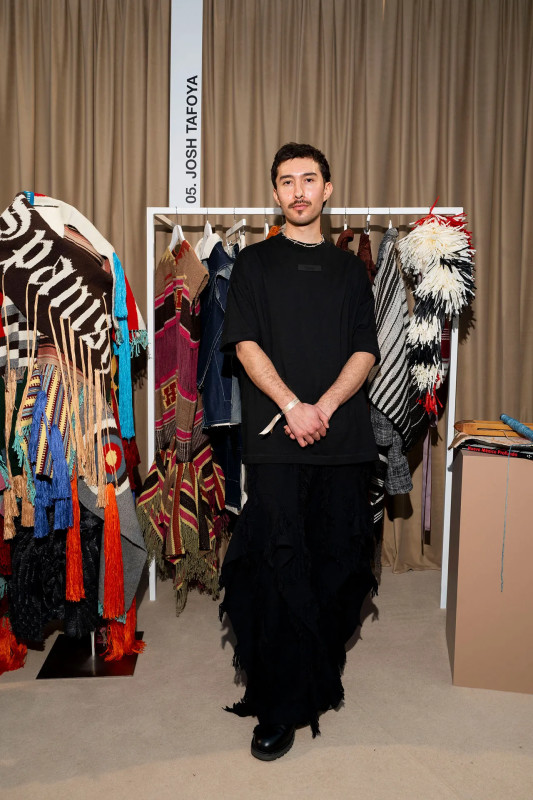
In the courtyard of a white adobe home in Taos, New Mexico, bundles of yarn are drying in the high summer sun. They’re hanging outside the studio of weaver and designer Josh Tafoya’s studio, which takes up part of the house his family has lived in for generations. The skeins of yarn are Tafoya’s experiment with cochineal, a natural dye derived from insects that live on cacti (which was once the second most valuable export from the “New World” to Spain during colonization in the 1500s, after silver).
Cochineal can produce a range of colors, from pale orange to deep magenta and, with the right additions (like a little lemon juice), a vibrant red. Tafoya reaches up to grab the bundles of yarn, one a sunset orange and another bright pink. Neither has achieved the color he’s aiming for. “I have to scrub my dye pot and start over,” he says. He’s not discouraged, but instead seems to relish the challenge to recreate the hue he sees in his mind.
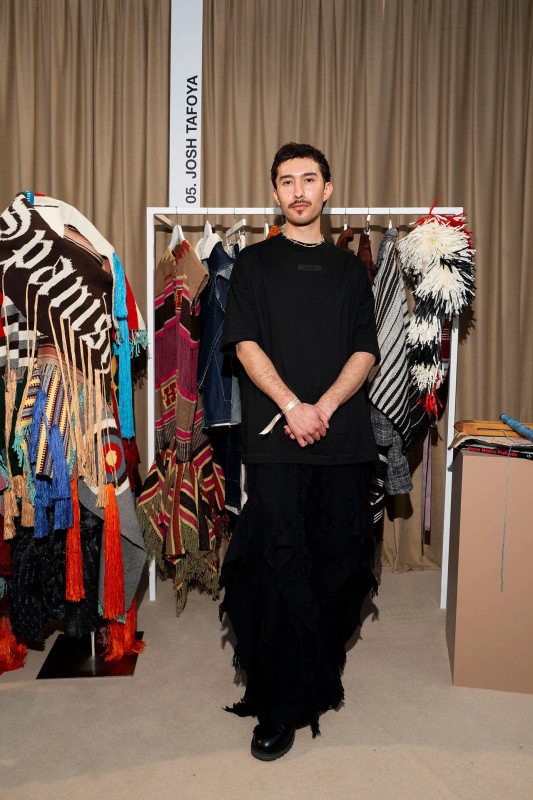
Photo: Courtesy of Josh Tafoya
Tafoya was born and raised in Rancho de Taos, a community just a few miles south of the better-known art enclave. He studied fashion at New York City’s Parsons School of Design before working with designers like Charles Youssef and freelancing for private clients, including swimwear brand Thorson. In 2017, he moved back to New Mexico, and started weaving after a chance encounter with some churro sheep’s wool sparked his interest. He’s mostly self-taught, reading books and employing techniques he learned at Parsons to master the medium.
And master it he has.
Early in 2025, Tafoya was chosen as a semi-finalist for the LVHM Prize and traveled to Paris to show his work to fashion icons like Anna Wintour, Jonathan Anderson and Law Roach, who parted the crowd to make his way to Tafoya’s designs. His garments have been worn by stars like Devery Jacobs, a Canadian Mohawk actress, when she appeared on “Ru Paul’s Drag Race;” Kiowa Gordon, star of “Dark Winds,” who donned a cream-colored Tafoya suit set to the opening night of Native Fashion Week Santa Fe; and singer/songwriter/’90s queen Jewel, who sports Tafoya designs to important events and on-stage performances.
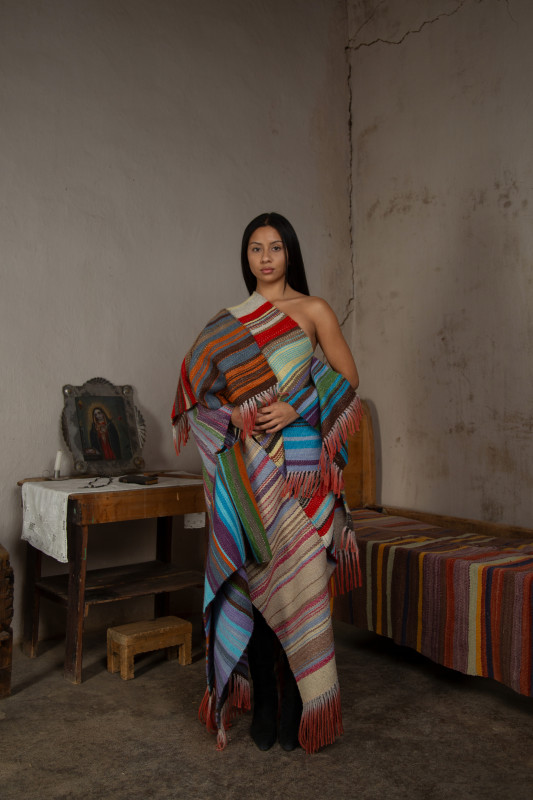
Photo: Bonny Melendez/Courtesy of Josh Tafoya
There’s nothing demure about Tafoya’s work. He weaves boisterous shapes with bright colors, clashing-yet-complimentary patterns and fringe details that inspire movement. In a market saturated with grey suiting and “quiet luxury,” his joyful and irreverent designs demand attention.
While it’s undoubtedly these visual qualities that attract the eyes of the fashion world, there’s also a deep storytelling capacity to his designs — a preservation of his complicated mixed heritage, historic references and a hefty spoonful of punk-rock attitude hidden beneath.
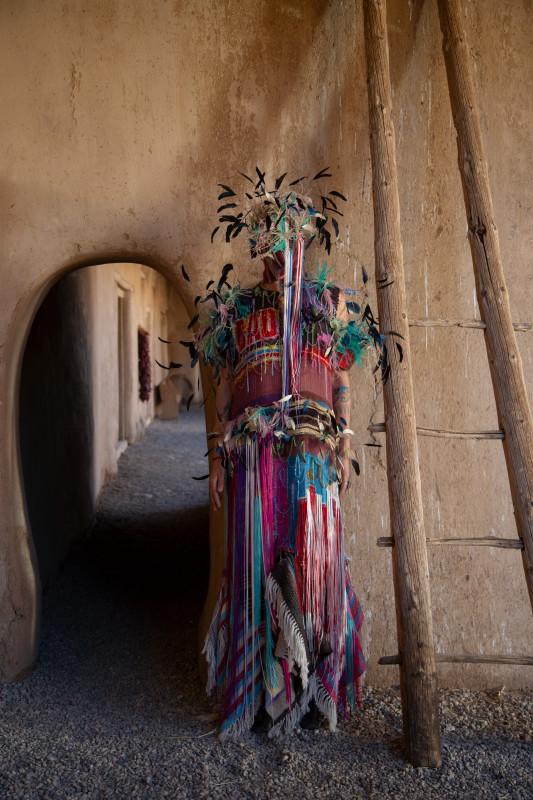
Photos: Bonny Melendez/Courtesy of Josh Tafoya
“I create my collections based on what I am going through, what I am thinking about,”
Tafoya tells Fashionista. “It’s about personal identity.”
He debuted his Spring 2024 collection, titled Riot, just as he was started to gain recognition, both in the fashion world, and in New Mexico. “It was a bit rebellious … and conceptually tied to ideas of the Pueblo Revolt, the Chimayo Revolt, and the Taos Revolt,” he recalls. “Every time there is a new system, there has to be change and rebelliousness, and that was the concept of this collection. It’s tied to Mexican Banditos, and spikes and studs, and sack dresses mixed with punk rock.”
There’s immense time and effort behind every piece Tafoya makes. The process of stringing his loom, a gift from his aunt, takes an entire day. The Rio Grande Walking Loom, traditional in Northern New Mexico, has a frame that stands around five feet tall and long wooden foot pedals. It requires both legs and arms to operate. “When I am on a deadline and I am pushing myself, my calves will start to hurt,” he notes. “It’s a full-body workout.”

Photo: Bonny Melendez/Courtesy of Josh Tafoya
Tafoya may use a traditional loom that’s hundreds of years old, but the things he makes on it are totally his own — eccentric but delicate and intentional. He does things other people cannot do, like weaving circles and words into his textiles. He places long strings into tight knit panels to create his signature fringe elements, and uses embroidery techniques to produce intricate details.
As he works, Tafoya is thinking not only about the pattern he’s weaving, but also the tightness of the knit and the structure it creates, and then how that will play into the final garment’s shape and draping. Some of his pieces feature strings of Swarovski crystals that feel like drops of water sparkling on the desert mesa, caught in spiders’ webs.
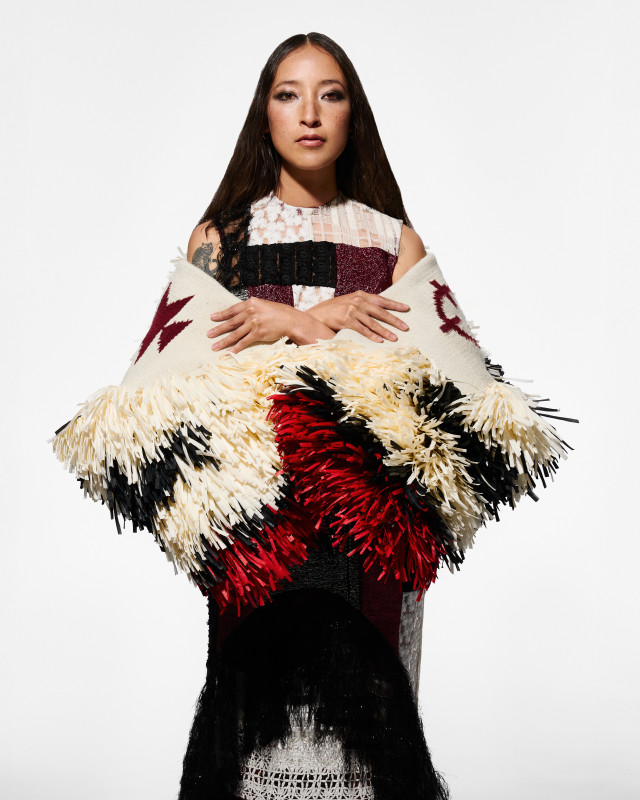
Photo: Dillon Sachs/Courtesy of Josh Tafoya
One of his latest collections, Bruja, is inspired by family lore and cultural prejudice. There’s a long history of curanderas (natural healers) in Northern New Mexico, though many were branded as “witches” by the Catholic church, and vilified as colonization attempted to wipe out Indigenous cultures.
As the story goes, when Tafoya’s great-grandmother was a child, she ventured outside to use the family outhouse and noticed a white owl in a tree. (Owls have a deep cultural significance in New Mexico, and can have negative connotations.) She told the owl to “go eat shit” (in Spanish), and the owl spoke back to her. As it flew away, she noticed the bird had red talons. There was a woman who lived in the village who had red nails, and was rumored to be a witch.
“It’s a story about shapeshifters,” Tafoya summarizes. When his great-grandmother went back into the house and told her parents what she had seen, they said she needed to go back outside and bless the outhouse with a cross and some salt to keep the witchy owl at bay. While this lore inspired the entire collection, it’s poignantly present in the first look, an inside-out suit embroidered with the words “mañana vedras por sal,” which in English reads, “tomorrow you will come for salt.”
Photos: Dillon Sachs/Courtesy of Josh Tafoya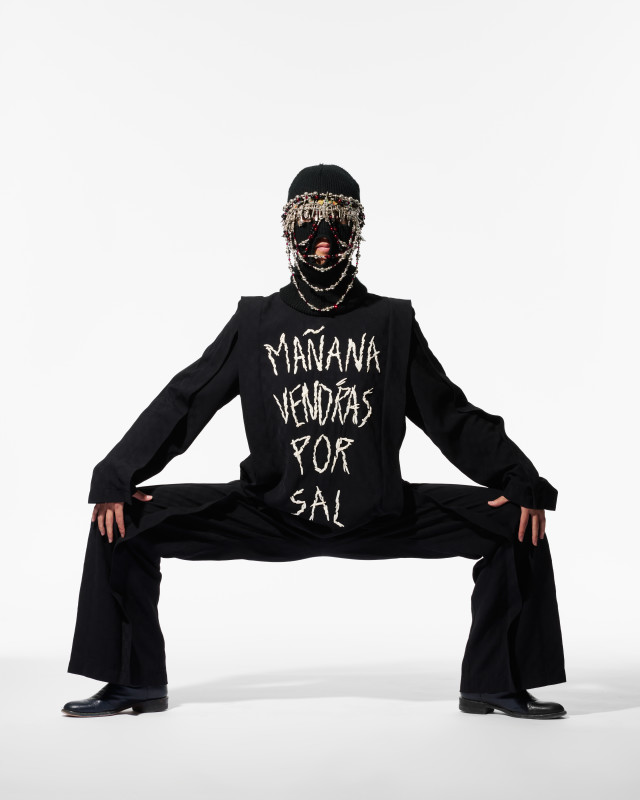
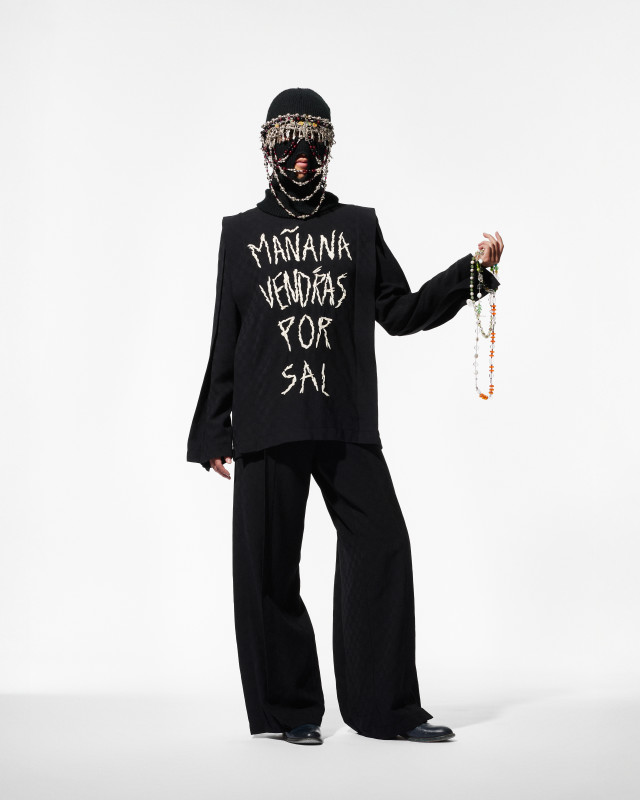
“Rancho de Taos is considered a Genizaro community,” he explains. “So, there’s a long history of brujas (witches), and duendes (folkloric creatures that resemble dwarves or elves), and having these old practices live on.”
Genizaros are Indigenous people who were displaced during colonization. Many were bought and sold into slavery as children, losing connection with their tribal identities, languages and even their true names. They were trained as warriors, and made to fight with Spanish settlers. In the late 1700s and early 1800s, land grants were given to Genizaro families who wanted to build lives of their own, resulting in communities like Rancho de Taos that upkeep both Indigenous and Spanish traditions, as their heritage comes from both cultures.
The collection Tafoya is currently weaving pays homage to a New Year’s tradition in Rancho de Taos called Los Comanches. Dancers in Indigenous regalia start at the community’s church and visit homes with people named Manuel and Manuela, or anyone who requests it.
“The new collection is about Catholicization, drawing on Los Comanches and the church in Chimayo, which is another example of a Catholicized tradition,” Tafoya explains. “These traditions are very unique, and they need to be talked about, otherwise we lose them.”
Photos: Dillon Sachs/Courtesy of Josh Tafoya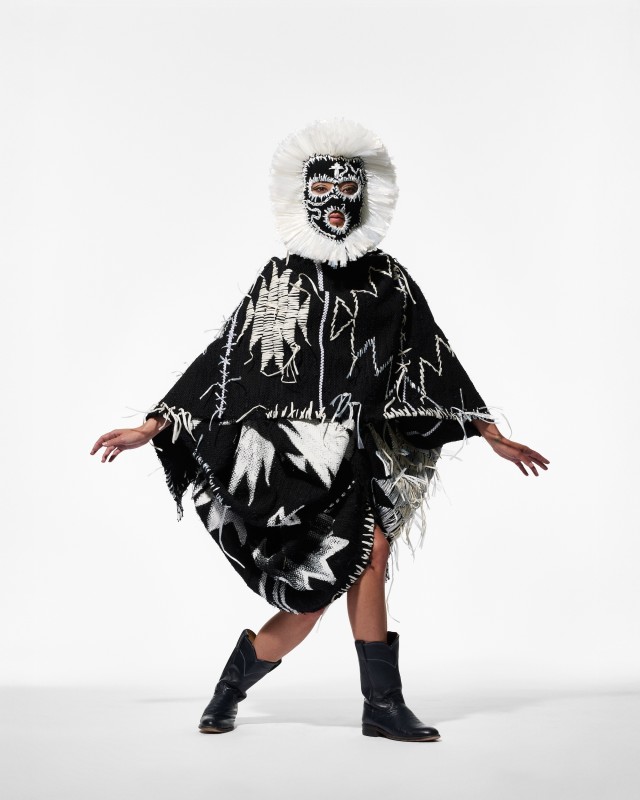
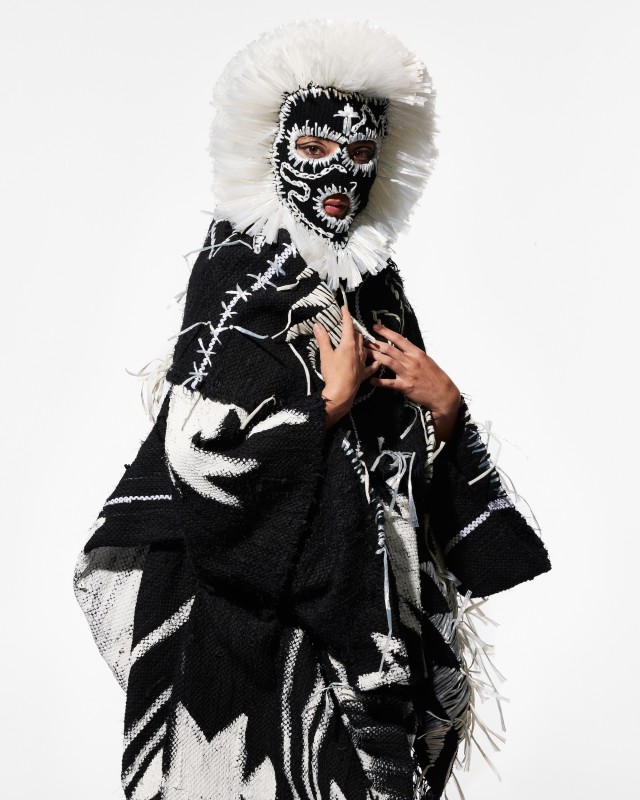
Right now, Tafoya creates every garment from start to finish with his own hands, making every piece a customized, one-of-a-kind creation. “Fashion is a conversation between the wearer and the garment. When I see someone they try on one of my pieces, that’s where the joy comes in,” he says. “Pieces on hangers look nice, but they’re not at their full potential. When someone wears it, the fringe is moving, the panels are working, everything comes to life.”
Customers can order directly from Tafoya, or in-person when he pops up at shops like Standard & Strange and 4Kinship in Santa Fe. He works atelier-style, so the garments in-shop are typically samples, which he replicates to the individual’s measurements for a perfect fit. (Though at 4Kinship, Tafoya offers a handful of one-off ready-to-wear pieces.) Prices range from around $180 for headbands, to $1,600 for an elaborate jacket.
There’s something old-school and traditional about the way people find Tafoya’s designs: word of mouth and referrals from friends or connections in the fashion world, which is smaller than many think. Next up is an exhibit at nearby Hotel Willa in Taos starting Aug. 8, which will debut with a fashion show. Then in September he’ll be traveling a bit further, with plans to show work during New York Fashion Week.
Fashionista is the leading online destination for current and aspiring fashion and beauty industry professionals. Reach businesses, students and consumers alike with our range of digital offerings.
#Josh #Tafoya #Weaving #Ancestral #Lore #Striking #OneofaKind #Garments

